St George-the-Martyr's Anglican Church
Queenscliff, Victoria
1871 Geo. Fincham, 1 man., 6 speaking stops, 1 coupler, mechanical action
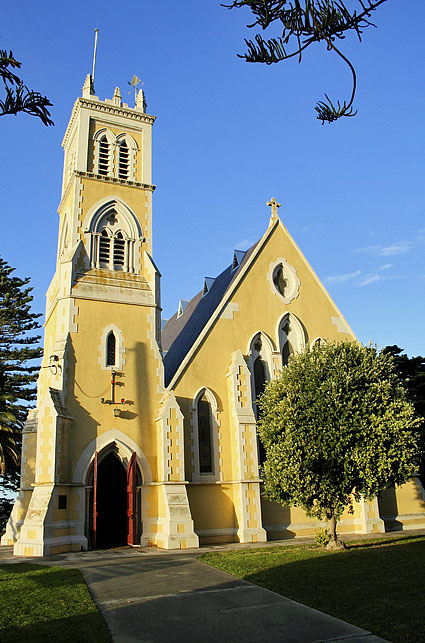
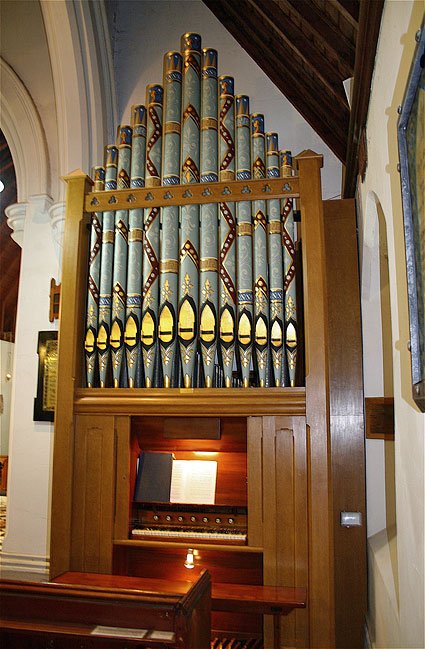
Photos above: Trevor Bunning (Oct. 2008)
The George Fincham organ of 1871 at St George's Church was reopened on 30 October 1999 following a complete restoration by Australian Pipe Organs Pty Ltd. The instrument has had a checquered history: built for St Philip's Church, Collingwood, it was moved to St Saviour's Church in the same suburb in 1875, where it remained until the mid-1950s (the church still survives in the care of the Russian Orthodox denomination). It was restored and installed at St George's Church, Bentleigh in 1957 by Hill, Norman & Beard; this church closed in 1996 and the organ was given to its counterpart at Queenscliff, an outstanding example of Gothic architecture designed by Albert Purchas and modelled upon a medieval church at Skelton, Yorkshire.
The instrument has received minor alterations over its 128-year history. The original Fifteenth 2 was changed to a Dulciana 8 (bass grooved into the Stopped Diapason) together with the addition of the Pedal Bourdon on tubular-pneumatic action, these carried out in 1900 by Frederick Taylor. The original feeders and blowing handle have been removed and it is thought that for its installation at Bentleigh the original side panels to the case were removed and the casework crudely refinished in 'Estapol'; the decoration of the facade pipes may have also been simplified though overpainting at this time.
The restoration work has been funded through a public appeal conducted under the auspices of the National Trust of Australia (Victoria) and grants from Heritage Victoria. The slider windchest and mechanical key and stop actions have been fully overhauled The double-rise reservoir was releathered and a new blower fitted. The pedal chest was moved further to the rear to enable it to be located within a vestry at Queenscliff, this involving the careful extension of the pneumatic tubing (meticulously carried out in tube trays) and the wooden trunking. New stays were fitted for the pedal pipes. The spotted metal pipework was cleaned and fitted with new tuning slides, replacing the rusty originals, while the wooden pipes were refinished in shellac.
The casework and console were repaired and refinished by Marc Nobel and Christine Holmes. New side panels, with chamfered edges, were constructed to replace the missing originals. The casework was regrained in light oak, while the console area and bench were repolished in a dark shellac finish (the console had previously been painted light cream, making a significant improvement). The restoration of the facade pipe decoration (the most important early example of indigenous work to survive in Victoria) was a complex process, especially as the majority of the decoration had been obliterated by later overpainting. The end result is breathtaking, with a wide variety of patterns and motifs.
The instrument has been accommodated at the eastern end of the south aisle of St George's Church, facing west, where it speaks directly into the building. It was possible to place it directly in front of a doorway, which has facilitated the location of the pedal pipes in the vestry behind, almost certainly provided as an organ chamber last century. Owing to unobstructed placement and adequate height, the instrument has proven more than adequate to accompany the largest of congregations and it has given the church an instrument which looks and sounds as if it had been placed there at the time of its original construction.
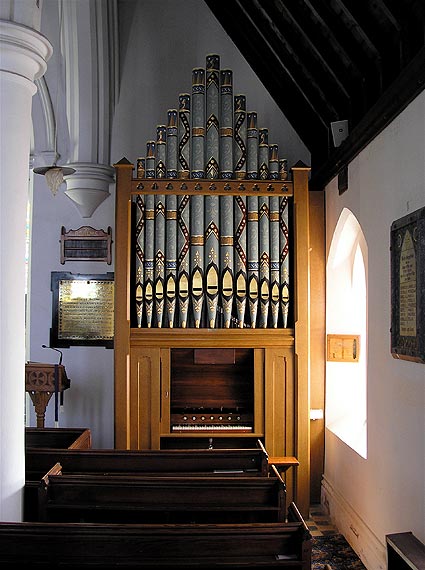
|
MANUAL |
8 8 8 4 4 16 |
gvd.bass TC |
compass: 56/29
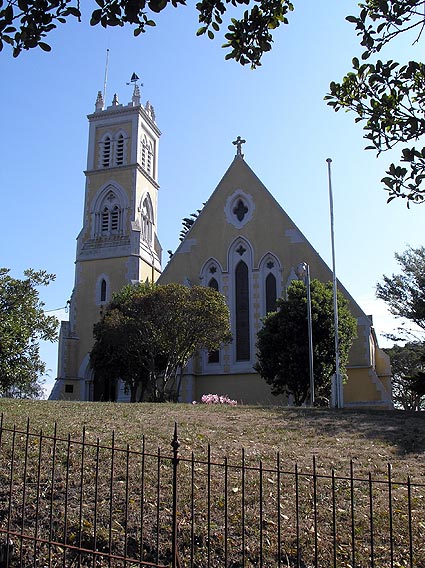 |
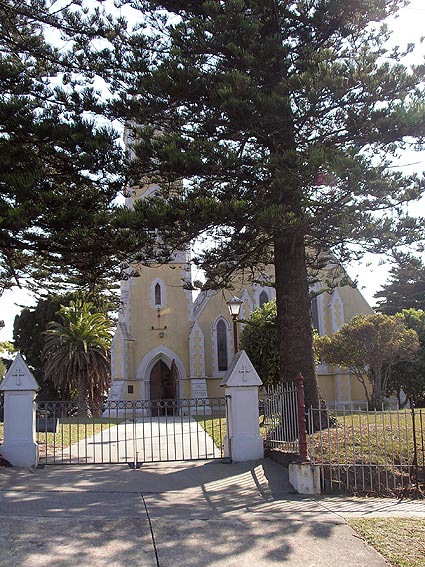 |
|
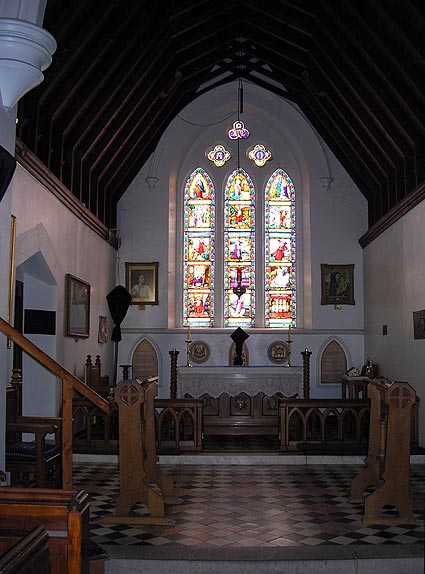 |
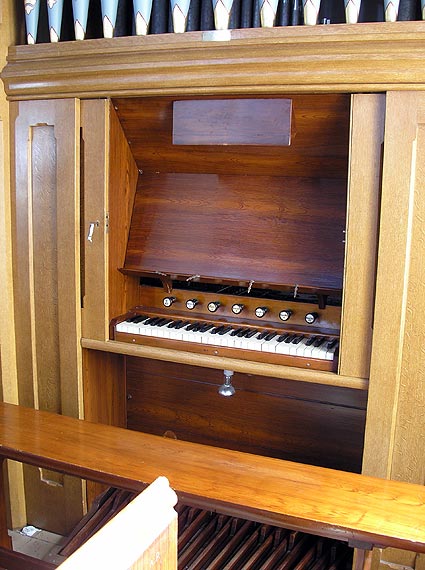 |
|
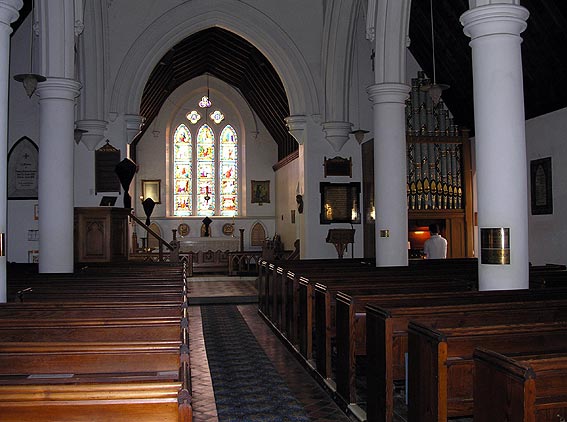 |
||
 |
||
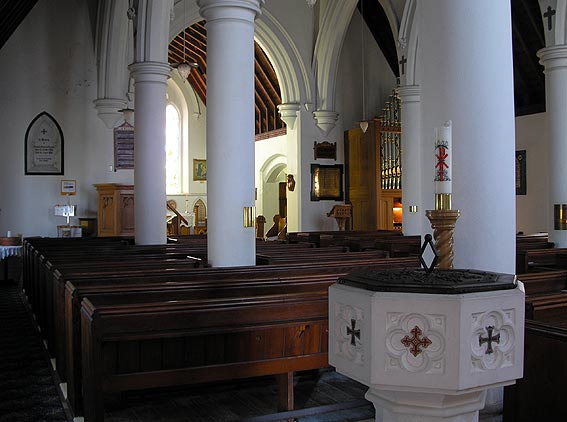 |
||
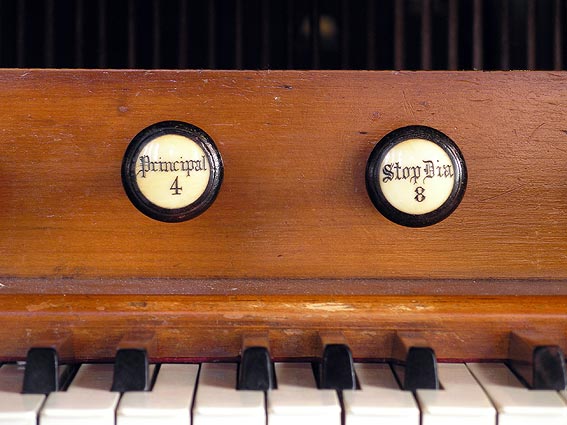 |
||
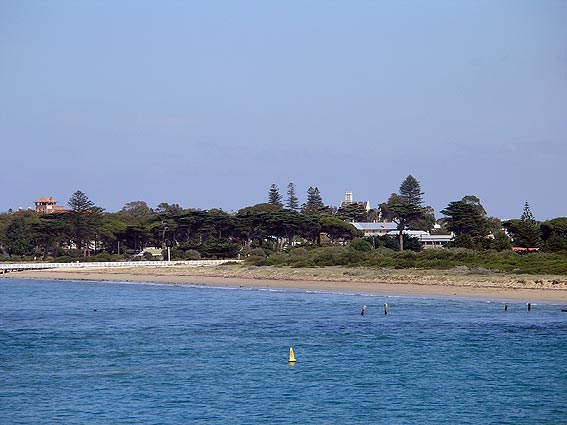 |
||
Photos: Simon Colvin (Feb. 2007)

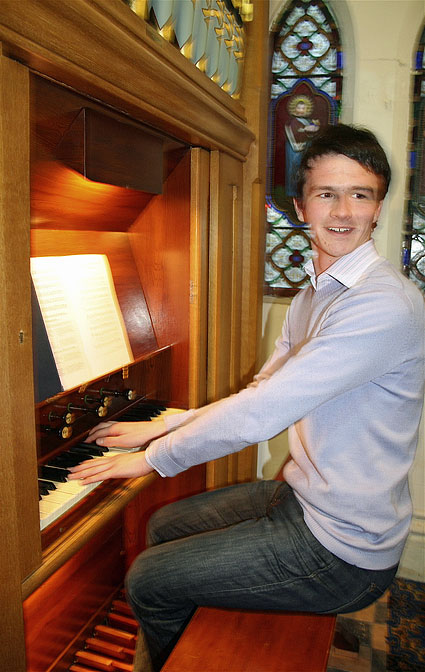
Sam Allchurch demonstrating the organ
2 photos above: Trevor Bunning (Oct. 2008)